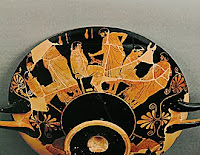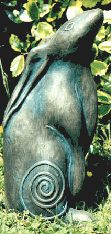
The following is excerpted from The Leaping Hare by George Ewart Evans and David Thomsen.
_________________________________
None of [the traditional understandings of the witch] can help us in our inquiry into the origin of the hare-witch concept. For this we must turn to a much more matter-of-fact image: the witch as a survivor of the priest, priestess, or leading participant in the ceremonies of a very ancient religion.
[Humanity] was bound to animals from the very beginning. Animals were an essential part of religion; and the core of the ritual of this religion was concerned to consecrate the animals and to ensure that they would survive and multiply in order to help humans sustain themselves on this earth. . . . Our thesis is that the hare was one of those consecrated animals; and in the periodic celebration of the rituals connected with this creature, certain members of the group (witches, if we are allowed to use the anachronism) assumed the shape of the hare as part of the ritual.
We know from the cave figures at Le Gabillou and Isturitz that early humans were involved with the hare; and we can infer that the people who were taking part in the ceremonies concerning the hare took its skin and head as part of their dress and simulated the actions of the animals as they had observed them in the wild state. . . . During these rituals the animal-humans worked themselves into a trance in which they believed they became, or were changed into, the group or totem animal. This was done, as already suggested, either for religious reasons – for cementing the identity of the group with the animal – or for magical reasons: for ensuring the success of the hunting of the animal that was to follow the ceremony. Probably, however, both purposes were implicit in each ritual.
Image: Artist unknown.





























